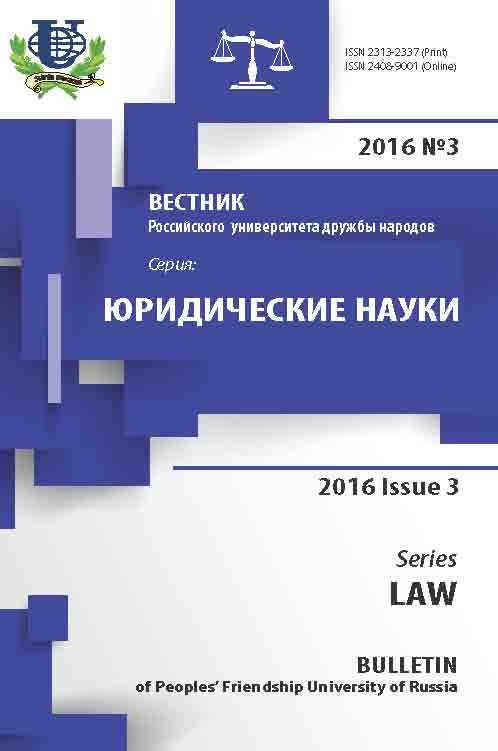Model of Legal Progress: from “Evolution” to “Explosion”
- Authors: Beljaev M.A1
-
Affiliations:
- Voronezh State University
- Issue: No 3 (2016)
- Pages: 9-20
- Section: Articles
- URL: https://journals.rudn.ru/law/article/view/14778
Cite item
Full Text
Abstract
This article is devoted to legal progress and metaphors, which describes it. The author proposes to analyze two metaphors - “evolution” and “explosion”. These quasi-concepts are relevant to the study of dialectical interaction between quantity and quality. Thereby most abstract level of philosophical methodology will be applied to the juridicial issues. According to author’s statement, each scientific concept has epistemic and social grounds. Former bound concept with cognitive aspect of legal activity, latter describe communicative characteristics of actors, which activities changed the legal system. As a result, the following conclusions were obtained. On the one hand, because the law has system-ordered configuration and predictable effects, its development can be called “evolution”. On the other hand, since the development of the law is often intermittent, chaotic, unpredictable, it has rightly been compared with the explosion. It is shown that these metaphors reflected of different models of social reality. Different images of social world exists because actors, which created it, occupy different functional position in the structure of society. In this sense, the evolutionary model corresponds to the position of law enforcers, and chaotic - the position of independent theorists. The paradox lies in the fact that in law necessity and contingency coexist peacefully. Thus, the science does not yet have a universal scheme of quantitative and qualitative changes connected in the law. For any specific research tasks to design this connection again, that requires taking into account the mass of cultural, psychological and anthropological data.
About the authors
Maksim A Beljaev
Voronezh State University
Email: belyaev@phipsy.vsu.ru
Faculty of Philosophy and Psychology Universitetskaja sq., 1, Voronezh, Russian Federation, 394018
References
















